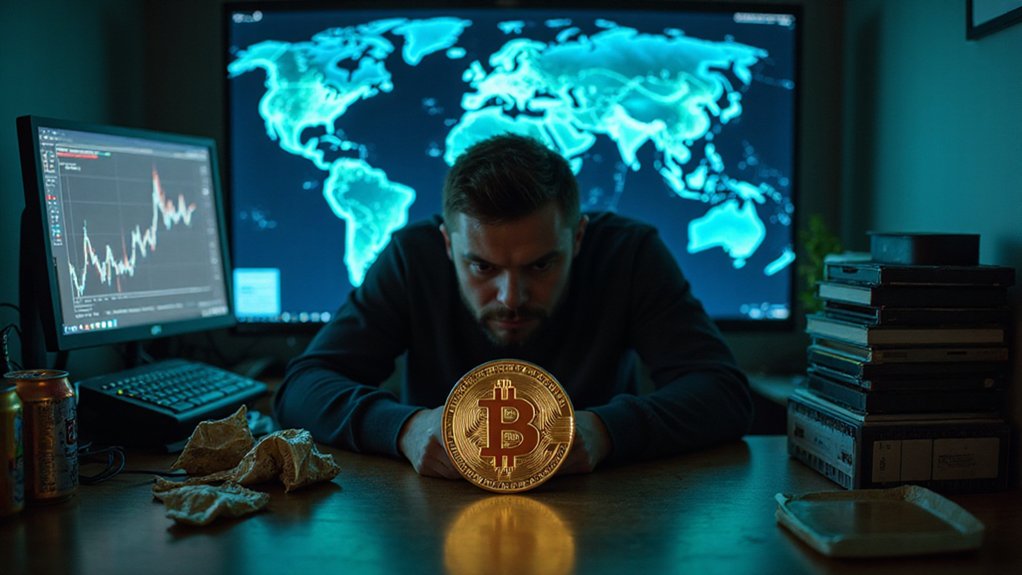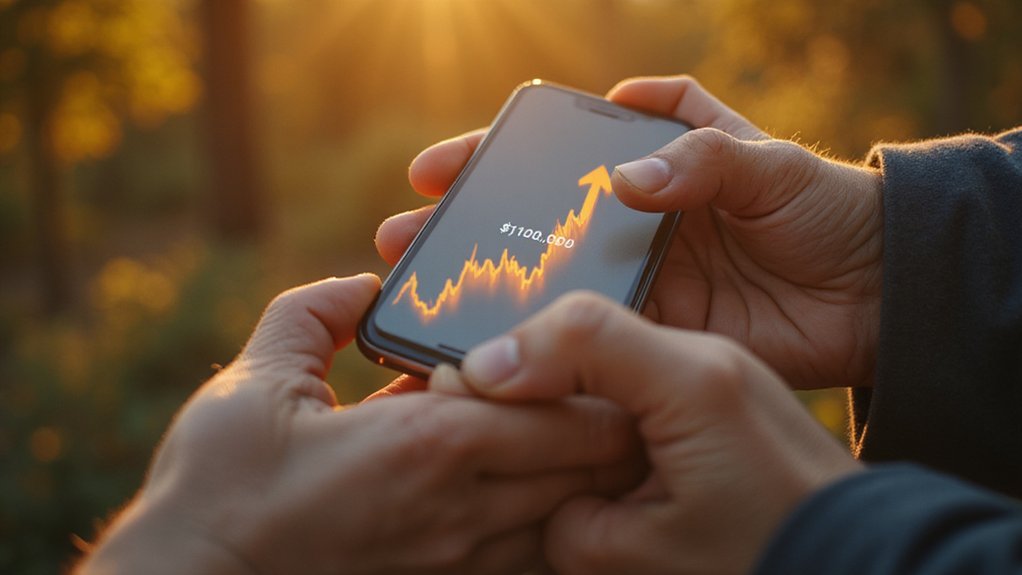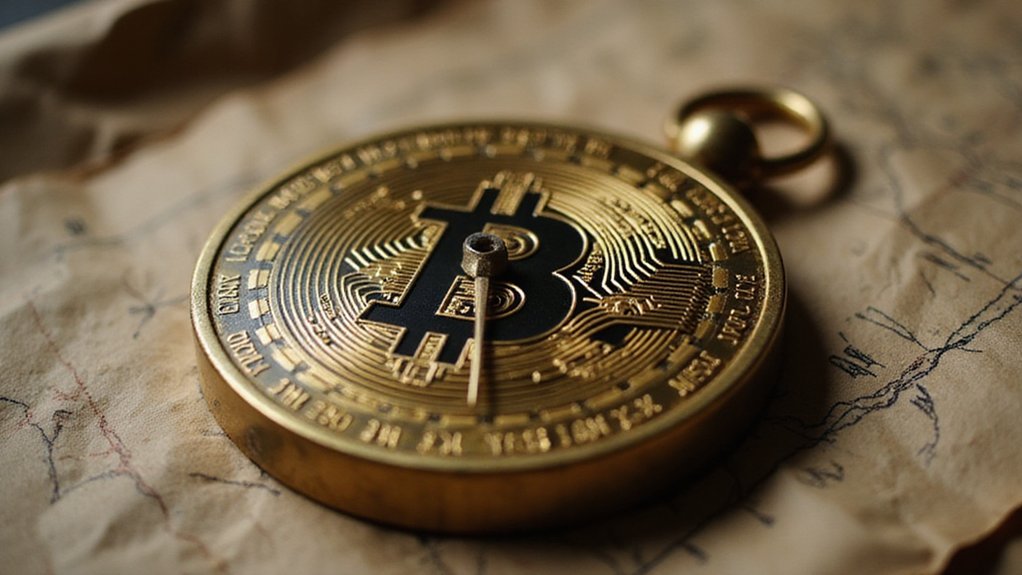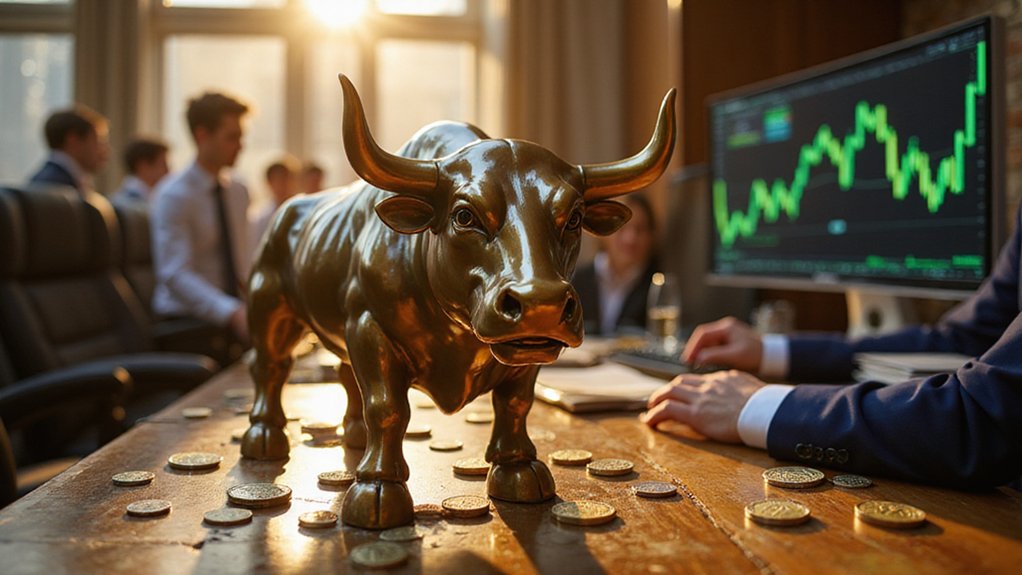Why has Bitcoin—the digital equivalent of financial sovereignty—captured the imagination of millions worldwide while remaining largely untouched by the vast majority of the global population?
The paradox of Bitcoin’s simultaneous ubiquity in financial discourse and its remarkably modest 4% global adoption rate presents a fascinating study in technological diffusion.
Bitcoin exists as financial paradox—omnipresent in discourse yet embraced by a mere fraction of humanity.
With adoption reaching merely 3% of its maximum potential, Bitcoin exists in that peculiar liminal space between emergent phenomenon and mainstream asset class.
The geographic distribution of Bitcoin’s 106 million adherents reveals much about the confluence of technological access, regulatory environments, and economic necessity.
North America maintains the highest adoption rate—driven by sophisticated financial markets and institutional participation—while Asia boasts the largest absolute number of owners.
India stands as the veritable titan of adoption with over 75 million Bitcoin holders, a figure that makes most Western institutional investments appear quaint by comparison.
Latin America’s staggering 117% year-over-year growth (2023-2024) illuminates Bitcoin’s appeal in regions plagued by monetary instability.
When conventional currencies falter under inflationary pressures, Bitcoin’s algorithmic scarcity becomes less theoretical abstraction and more practical necessity.
Contrast this with Africa‘s modest 1.6% adoption rate, which underscores how digital infrastructure remains the sine qua non of cryptocurrency participation.
The sentiment among current Bitcoin owners—67% of whom plan additional acquisitions in 2025—suggests a market driven by conviction rather than mere speculation.
This bullishness, combined with 14% of crypto-naive individuals planning their first purchases, indicates a potential inflection point in adoption curves.
Regulatory approaches continue to shape adoption patterns with China’s crackdown serving as the cautionary exemplar of how governmental intervention can reshape markets.
Meanwhile, blockchain development flourishes in Asia, which hosts 32% of global digital asset creation despite regulatory headwinds.
Business entities have increasingly recognized Bitcoin’s value proposition, with corporate investment experiencing a 30% year-on-year growth in 2024 as companies diversify their treasury holdings.
In the United States, cryptocurrency ownership has seen remarkable growth, with 28% of American adults now holding digital assets in 2025, up significantly from just a few years prior.
The current market cap growth to over $1.7 trillion further solidifies Bitcoin’s dominance in the cryptocurrency space, representing a significant portion of the overall digital asset ecosystem.
The persistent technological advancements, gradual regulatory clarity, and growing integration with traditional financial systems suggest Bitcoin’s journey from fringe phenomenon to established asset class continues—albeit at a pace that confounds both its most ardent supporters and staunchest critics.









